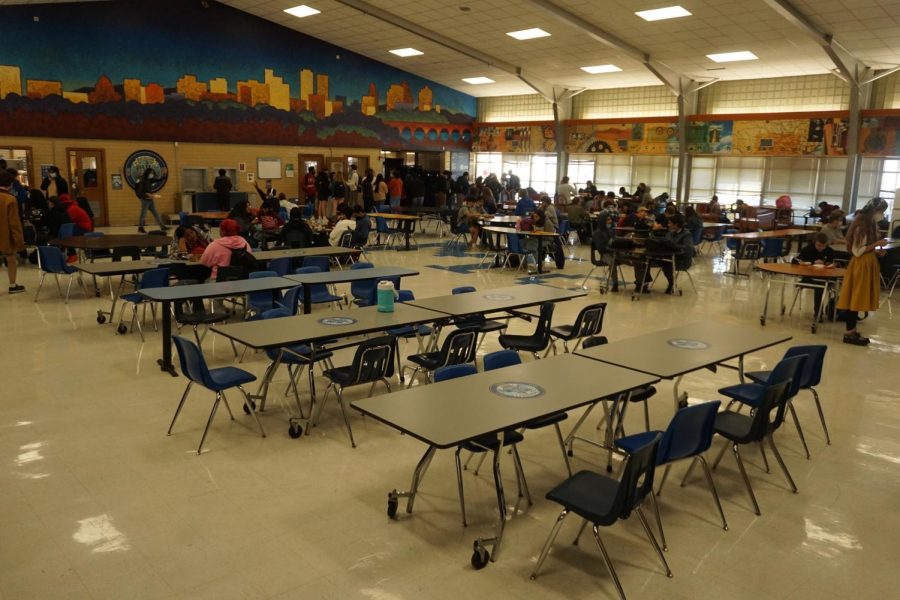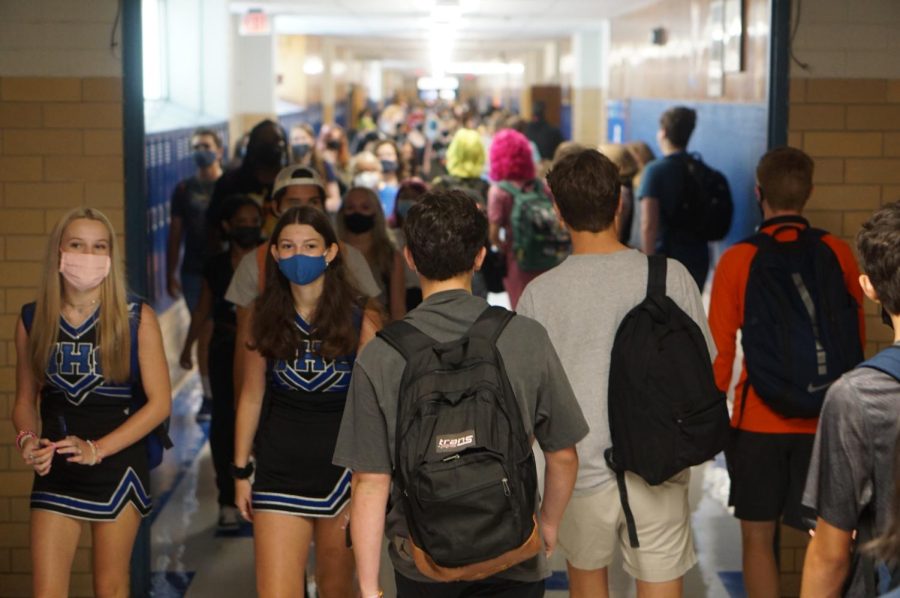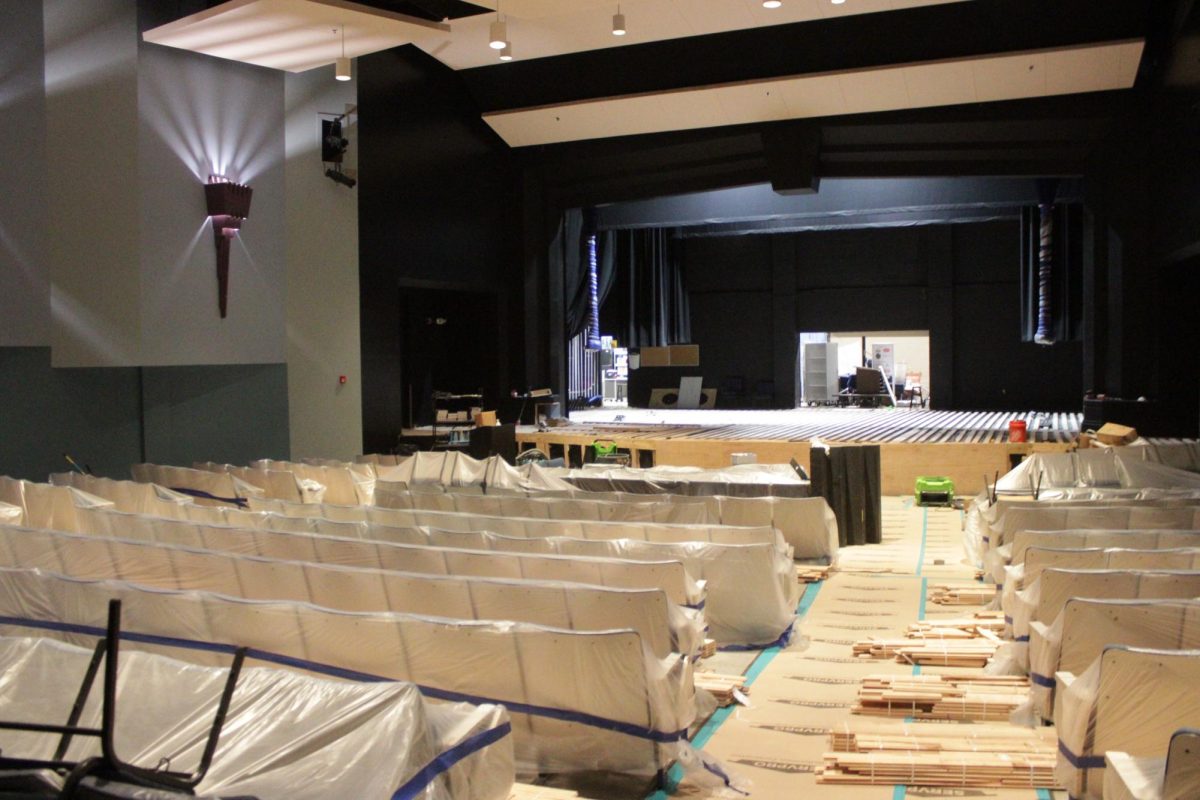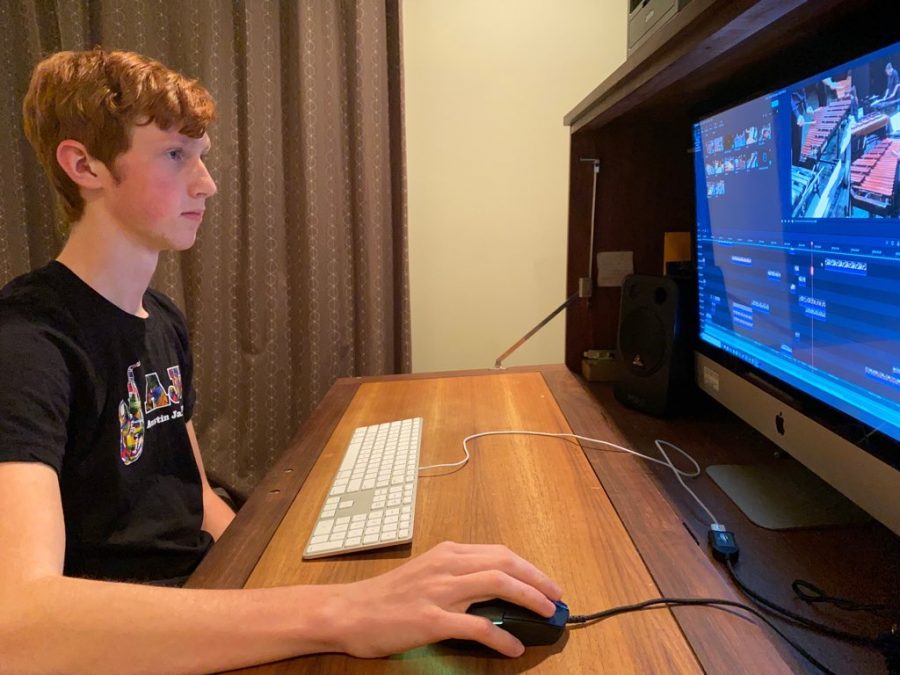In response to the spread of the coronavirus pandemic, traditional classes have been canceled for the foreseeable future, and online classes will start on April 6, but the administration has already stated that those classes are expected to cover much less material than would have been covered in the traditional classroom setting.
The lost time and instruction has left many Advanced Placement students wondering how they will be able to take the AP tests that they have been preparing for all year long. Thankfully, they will be able to test, but the College Board has made significant changes to the format of the test in a reaction to the academic realities created by the national reaction to the COVID-19 pandemic.
In an attempt to implement social distancing practices, students will be preparing for and taking their AP tests online and from home. The format of these tests will also be drastically different compared to what students originally signed up for. Typically, the shortest AP test is an hour and thirty minutes long, while the longest is three hours and fifteen minutes long. This year, every test will be 45 minutes long and consist only of free-response questions.
No essays, no multiple choice. Similar to a college exam, students will be able to use notes that they have taken throughout the year. According to a tweet from Trevor Packer, senior vice president of Advanced Placement and Instruction at the College Board, the questions “won’t test simple factual recall; instead they’ll be focused on skills and thematic understandings.” Students will also have the option of typing their responses or writing them on paper and submitting them as a photo.
The at-home AP Exams this year will not include any multiple-choice questions, only free-response questions adapted for secure testing at home. They will measure skills that can’t be learned from Google or chats with friends. By April 3, we will post the specifics for each exam.
— Trevor Packer (@AP_Trevor) March 20, 2020
AP World History teacher Katie Taylor was not surprised by these changes when they were announced.
“I was relieved that the College Board was still giving students the option to take the exam that they worked so hard to prepare for,” she said.
Although the College Board is offering refunds for those who no longer wish to take the test, she believes her students are well-prepared and encourages them to take it.
“College Board removed the hardest portion by dropping the multiple-choice section,” she explained. “We have been practicing our historical-thinking skills and practicing AP writing all year long.”
McCallum counselor and AP Coordinator Shelley Goldstein agrees. “My advice is to take the test. It can’t hurt you but could possibly help you and save money for college.”
Beyond the financial incentive AP Statistics teacher Richard Cowles sees a more noble and essential benefit to taking the AP test while in high school.
“The reality is that each student heading off to college needs these opportunities to see how capable they are as a future college student” he said. “The AP exam gives us all a glimpse of future success.”
And in the minds of some McCallum students that success might be a bit easier to reach given the new test format.
“[The tests] seem much easier now,” junior Marley Gattis said. “I’m relieved.”
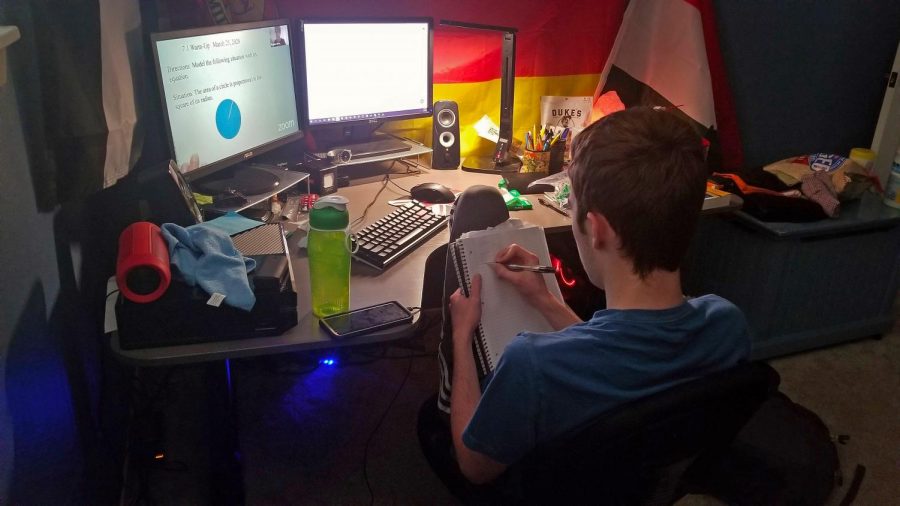
At the suggestion of his AP calculus teacher Angie Seckar-Martinez, senior Henry Winter takes an online College Board class entitled, “Calculus AB: 7.1 Modeling Situations with Differential Equations,” taught by Virge Cornelius, an AP Calculus teacher at Lafayette High School in Oxford, Miss. The course is available on the Advance Placement YouTube channel. Students can view the class via livestream or watch them after they are recorded and archived on the YouTube channel.
Gattis will be taking his first AP tests this year for Physics 1 and Spanish 4 and is not concerned about the new format.
“I don’t think anything’s going to be harder, to be honest,” he said. “You can assume that you’ll understand every question because it’s one-on-one. I think people are going to do a lot better.”
Teacher Amy Smith disagrees. Her AP Literature and Composition students had been preparing for 55 multiple choice questions and three essays. They will now be faced with different challenges.
“I just hope they’re going to be graded more leniently,” she said.
She believes that the multiple-choice section was the easiest portion of the test but knows that each class and each individual student has different strengths.
“A kid who struggles with poetry analysis might do better on the multiple choice,” she explained. “You usually have all these things to balance your score, whereas basing a score on one 45-minute essay is pretty scary.”
Because the test format has changed so significantly, much of the study materials and practice tests that are available to students have been rendered useless.
“It is kind of annoying that we have to study for this whole new thing, but at least it’s shorter,” sophomore Carden Arellano said.
She has been preparing for the AP World History: Modern test and is concerned about how she will study. She and her fellow students have spent much of their time in class learning how to construct the perfect DBQ and rule out answers to multiple-choice questions that now will no longer be on the test.
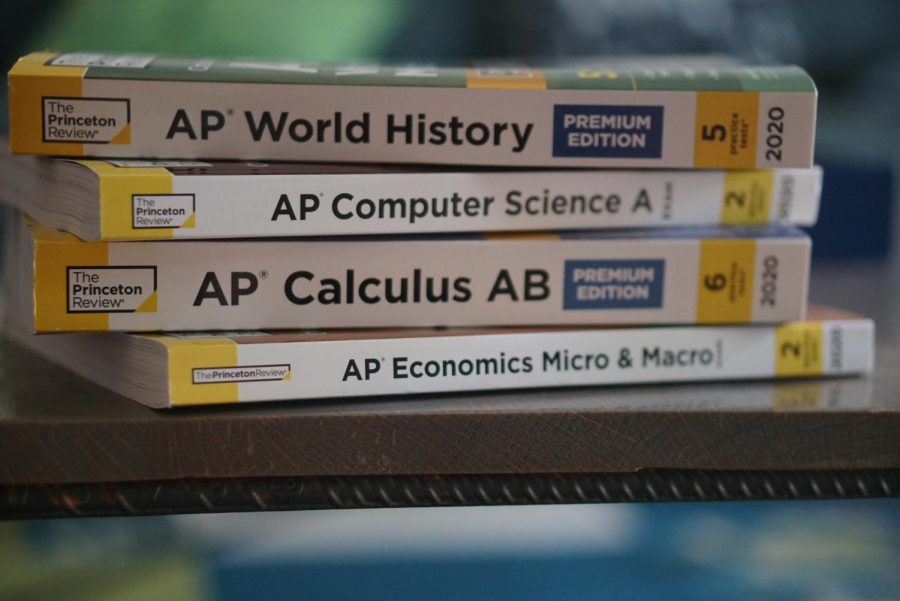
Prior to the COVID-19 outbreak and subsequent changes to the AP test format, students wear gearing up with multiple-choice practice tests. Those practice tests have been rendered obsolete.
Students also must demonstrate their understanding of the curriculum in a more in-depth way. Typically, AP tests require a broader understanding of the curriculum so teachers tend to move quickly through topics.
Gattis said that rapid coverage required to cover the entire AP curriculum is not a very effective way for students to retain what they are taught. “You’re essentially just turning your brain into a computer where your ability to pass the test is based on memorization of strict criteria,” Gattis said.
Taylor understands this criticism and said the change in the test format changes the way the course should be taught. She said that if she could have known that this would happen, she would have changed the way she taught the class.
“Knowing what I know now, I would have slowed down and spent more time delving deeper into each unit since we are well beyond the history that will now be tested on the exam,” she said.
To compensate for canceled classes, the College Board has decided that all AP tests this year will only cover the roughly 75 percent of the curriculum that students were taught in class. The other 25 percent, along with reviews of past material, will be taught by AP teachers all over the country and live-streamed on YouTube.
The full course schedule for the free, live online AP classes is now available, along with information about what will be covered this week.
Links to upcoming classes are here: https://t.co/OIkQyc4cww. More will be posted shortly.
Lessons begin tomorrow, March 25. pic.twitter.com/Dj8JvSCebC
— AP for Students (@APforStudents) March 24, 2020
Whether McCallum teachers only review topics or teach the uncovered ones, as well, is up to them.
“What my students will be doing is writing 45-minute essays, submitting them to me, and then I’ll be giving them feedback,” Smith said.
Taylor has posted review materials to her BLEND page and urges students not to get rusty.
“In years past, I have had many students just watch Crash Course World History as their review,” she said. “Most importantly, find something that works for you and keep at it. The more time you spend with the content, the better you will remember it!
Cowles agrees and says a consistent daily approach to preparing is the best way to get ready for test day.
“Better to study for each AP exam every day than trying to rotate days,” Cowles said.
He agrees that a consistent daily discipline is key for effective studying.
“For example, studying an hour for each of three exams every day is better than studying three hours for one exam, then three hours the next day for [a] different exam, et cetera.”
He also recommends students turn their phones off and put them away while studying.
Reviewing previously covered material is part of the challenge of this now compressed spring semester. But even with reducing the amount that teachers must cover, many classes still have new information to learn.
AP Art History teacher Ana O’Keefe, for example, still has a lot of content to cover with her students. For the typical AP test, her students have to complete multiple-choice and essay sections requiring knowledge of 250 works of art. Now, only six of the 10 units usually covered in class will be included on the test, and some of the eliminated units are ones that O’Keefe covered earlier in the school year.
“Units 1-6 cover European artworks, and Units 7-10 include the non-Western content. That means students will not be tested on works from the Africa, Indigenous Americas, Asia, Pacific Islands or Global Contemporary, units which I prefer to cover early on in the school year,” O’Keefe explained.
Since the coronavirus has forced museums all over the world to close, many have been coming up with creative ways for people to see their collections from home, and O’Keefe encourages her students to find these resources when studying, especially because their end-of-year museum trip was cancelled.
In addition to online museums, there is also a vast among of online review materials made available by the College Board.
Goldstein encourages students to use information from the College Board as well as their teachers.
“There are lots of online resources and classes through College Board and your wonderful teachers at McCallum,” she said.
In previous years, if a student wanted to take a practice test, they could easily find a plethora of resources online and in textbooks. But the practices tests available currently are in the old format. On April 3, however, the College Board plans on releasing test examples as well as a testing schedule.
There are still several unanswered questions regarding the AP test. It is likely that teachers and students will be better informed in the coming weeks. One concern is that not all students who wish to take an AP test have reliable enough internet access at home to do so. The College Board claims that a solution will be found.
We will invest so that every AP student impacted by COVID-19 has the technology and connectivity they need to view the AP review sessions and take the exam from home. Students who need mobile tools or connectivity can sign up here to receive resources. https://t.co/C08iPIxSRH
— Trevor Packer (@AP_Trevor) March 20, 2020
“We agree that this is a serious problem. That’s why we developed a form where students (and educators on their behalf) can tell us what they need to access online AP courses and exams,” Packer stated in a recent Tweet. This obviously begs the question of how students with no internet access can either remotely inform their teachers of their situation or fill out an online form. It is suggested that those students should call a teacher who can help.
Another concern among students and parents is how the College Board will honor 504 plans. There is not much information regarding this issue yet, however, most cases have been approved for other College Board tests in the past.
One of the main reasons why so many students choose to take the AP test in the first place is to appeal to and save money for college. Some are concerned about how seriously this year’s format will be taken and how it will impact the future. Goldstein wishes to remind students that they are not in the least bit alone in their confusion.
“The entire world is in this together,” she said. “I can’t imagine that a college would penalize a student for something that is absolutely out of their control. AP and AP testing has been held to an international standard of quality for a long time and I see no reason for that to be discounted now.”
For more information about how McCallum is handling the AP Test format changes, visit the Mac Counselors website.





